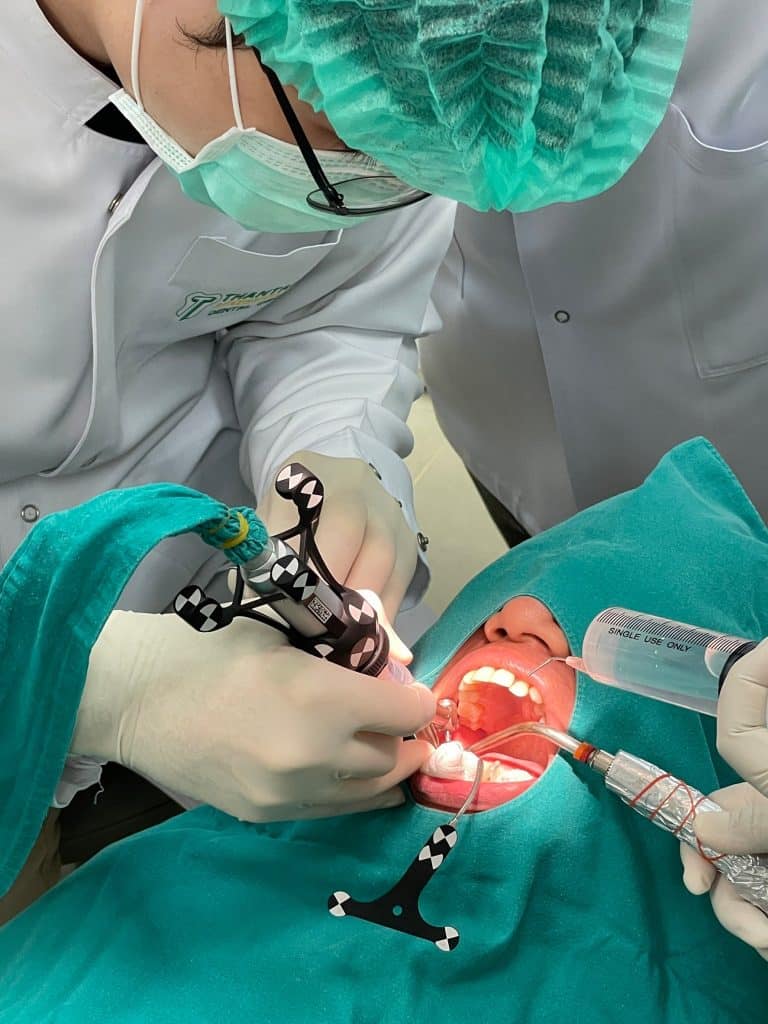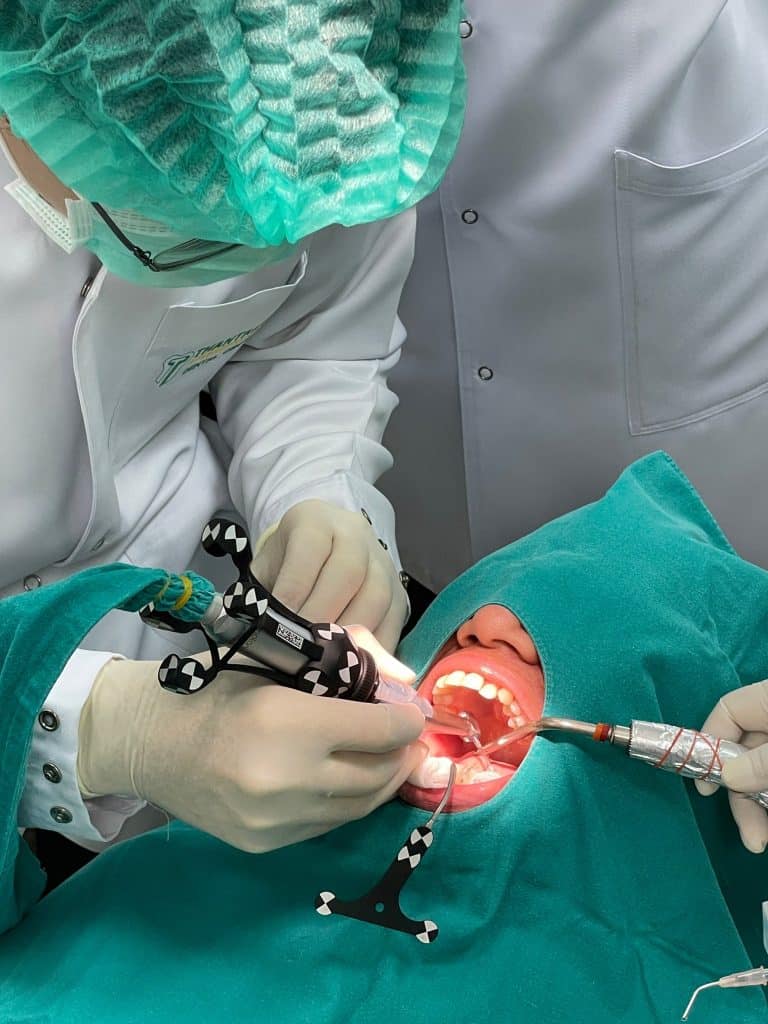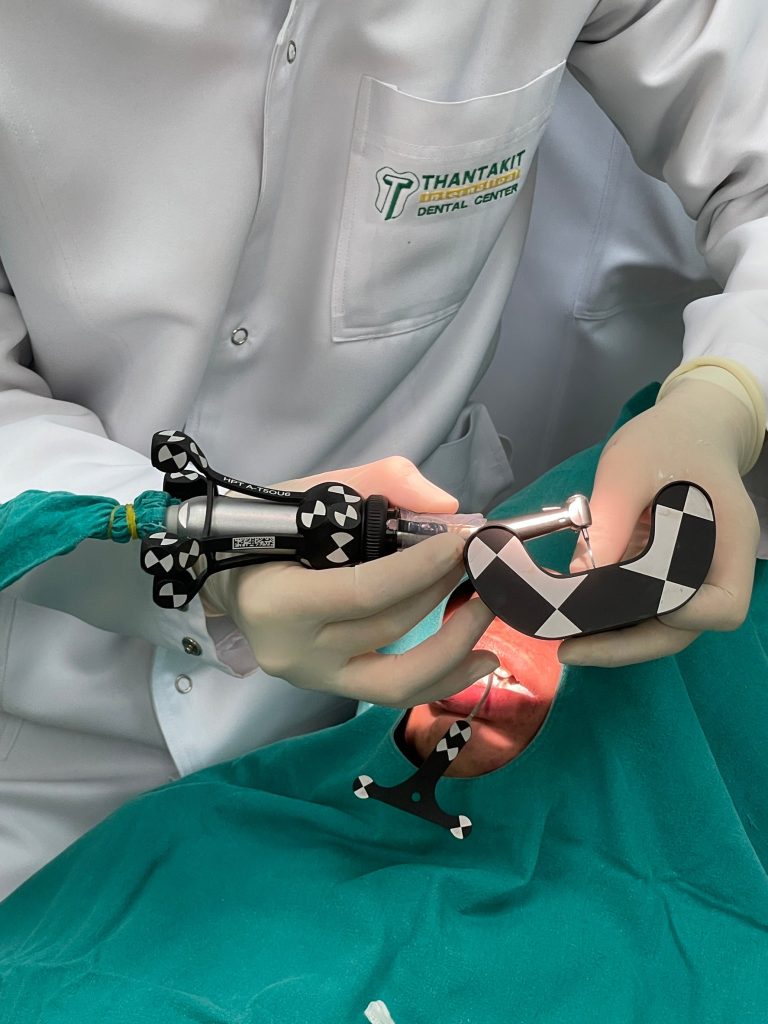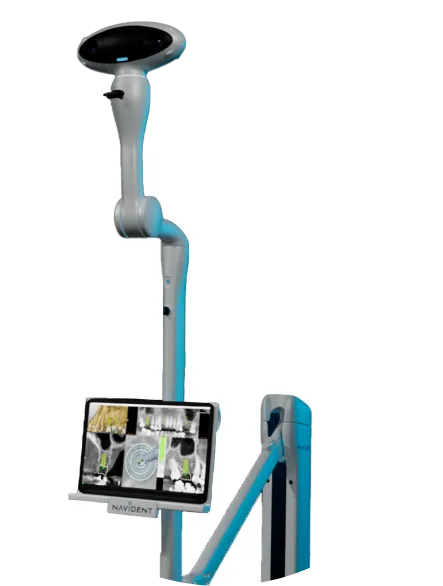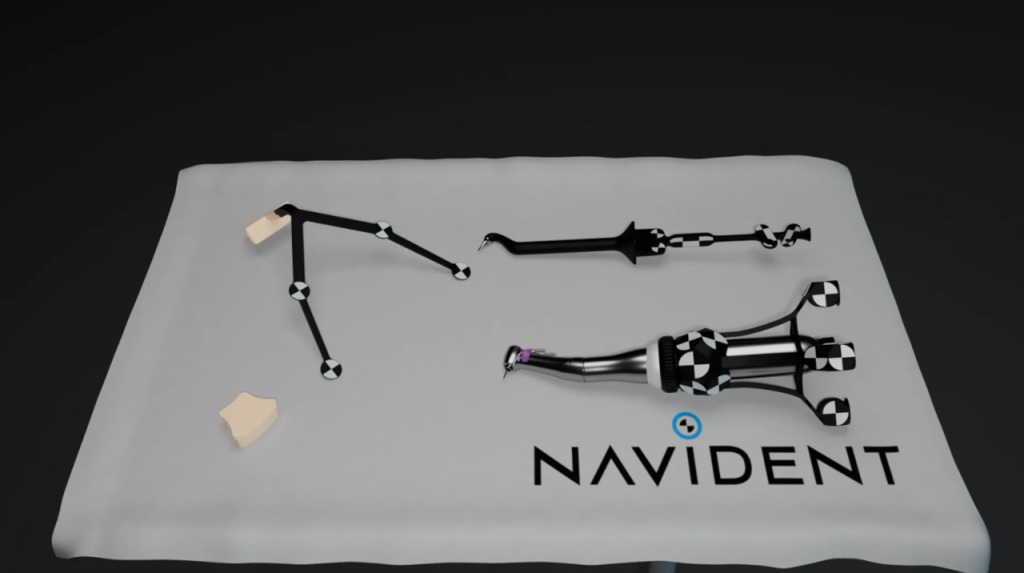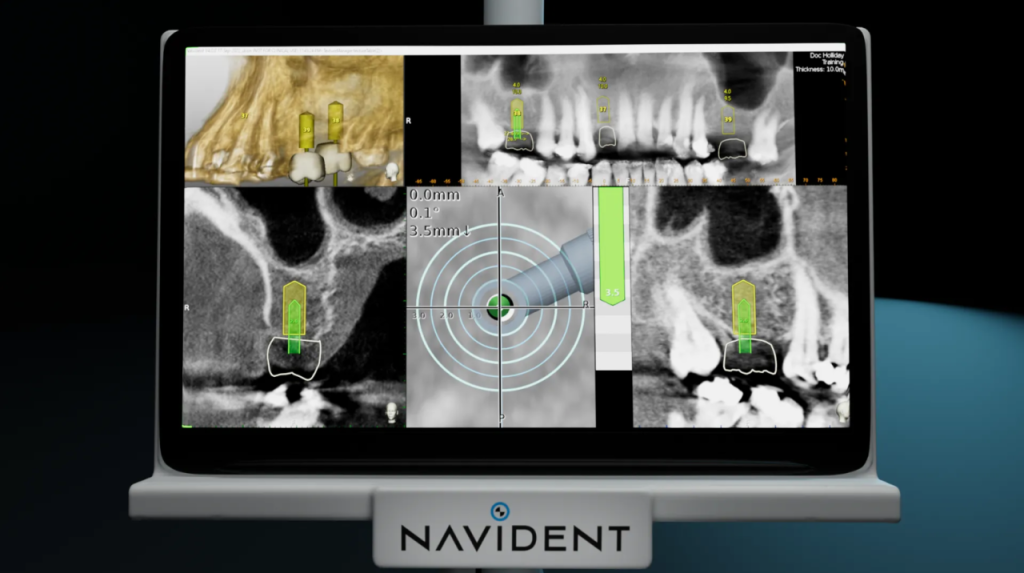First in Thailand at Thantakit International Dental Center
FULLY DIGITIZED AND MOST ADVANCED DYNAMIC COMPUTER AIDED
NAVIGATION IMPLANT SURGERY BY CLARONAV’S NAVIDENT FROM CANADA
A breakthrough in computer-aided implantology, Navident offers dental surgeons an easy to use and accurate to plan the desired restoration and implant placement on a virtual patient, then execute the plan on the real patient’s jaw.
Considering having your implant surgery with Thantakit International Dental Center today with the most advanced dynamic computer aided navigation implant surgery from Claronav’s NAVIDENT. Robotic automatic tag tracking camera allows precisely and accurately dental implant placement from single and multiple implants to full arch cases (All on X) in real time.
Minimal invasive operation, less trauma, avoiding injuries of important anatomical structure such as nerve, bone perforation, and touching adjacent tooth with real time dynamic navigation system. Planning your implant surgery with optimal implant positioning and stability for long term success of dental implant treatment.
“Real-time navigation is a valuable alternative to stereolithographic (static) guided surgery as it offers the clinician some advantages compared to the former technique. Using real-time (dynamic) navigation one can avoid the fabrication of a stereolithographic template resulting in a less expensive treatment. As navigation is considered as a dynamic guided surgery system, changes to the treatment planning (location and size of the implants, number of the implants, flap or flapless…) can be easily made intra-operatively. Also the tactile feeling during the drilling procedure, as well as the manual control over the implant stability, is still present when using navigation surgery.”
The EvaluNav application, included in Navident, enables evaluation of the deviations between the planned and the actual position of implants appearing in a post-operative (“post-op”) CT scan. Once the pre- and post-op scans are loaded and registered to each other, the exact position of each implant is detected in the post-op CT and compared to its planned position in the pre-op scan. The deviations at entry and apex and angle are automatically computed and presented both visually and numerically. Provided the implant itself was inserted under guidance, EvaluNav is able to further separate guidance deviation (system error) from drilling deviation (user error).














